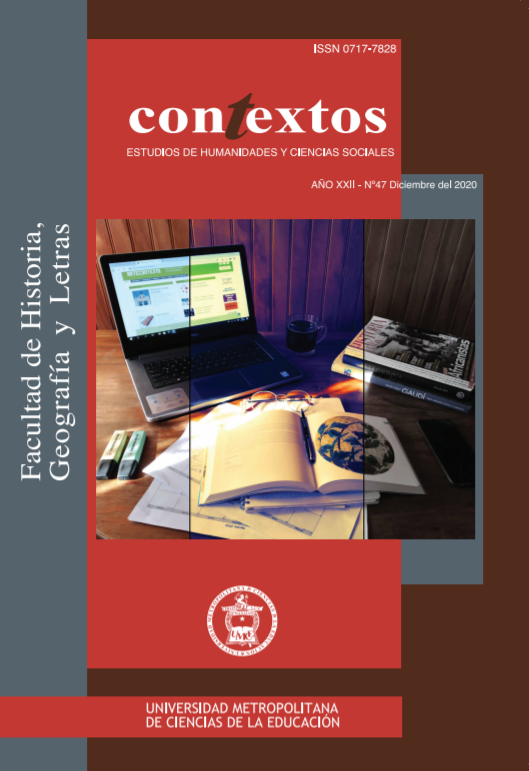Main Article Content
Dec 11, 2020
Abstract
It is widely agreed that the process of learning a second language involves exposure to the target language (Ellis, 1997; Lightbown & Spada, 1999; Saville-Troike, 2012). One of the settings where exposure occurs is the natural setting. Natural acquisition contexts or naturalistic settings are defined as environments where learners are exposed to the target language in their daily activities (Lightbown & Spada, 1999). The benefits of these contexts are that learners are provided with a wide variety of communicative instances as the target language is used as the default language resulting in encounters with different types of inputs (Lightbown & Spada, 1999). This study reports the findings from a two-week study of target language exposure experienced by two Chilean postgraduate students at a New Zealand university. Exposure was recorded and measured using a Google log diary, based and adapted from Ranta and Meckleborg’s study (2013). Results show a tendency for participants to be involved in receptive communicative instances rather than productive and a predominant use of their L1 in oral interaction. The study discusses some of the reasons why participants did not engage in more oral interaction in English within this naturalistic setting and why their L1s were predominant in oral interactions.
Downloads
Policies for open access journals
Authors who publish here accept the following terms: Authors will keep their copyright and will guarantee the journal the right to the first publication of their work, which will be subject to the Licence of Creative Commons acknowledgement, which allows for the use of this material only if the authorship is credited and the original source is acknowledged (the journal’s URL), and if it is not used with commercial ends and with any derivations of the original work.
Authors may adopt other non-exclusive license agreements of distribution of the published version (e.g. to save it onto a digital institutional archive or publish it in a monographic volume) only if the initial publication of this journal is indicated.
It is permitted and recommended for authors to divulge their work on the Internet (e.g. institutional digital archives or webpage) before and during the submission process, which may lead to interesting exchanges and increase the citations of the publication. (See Open Access Effect).
References
Bretch, R, & Robinson, J. (1993). Qualitative analysis of second language acquisition in study abroad: The ACTR/NFLC Project. NFLC Occasional Papers, August. Washington, DC: National Foreign Language Center.
Ellis, R. (1997). Second language acquisition. Oxford: Oxford University Press.
Ellis, R. (2008). The study of second language acquisition (Second Ed.). Oxford: Oxford University Press.
Ellis, R., Tanaka, Y., & Yamazaki, A. (1994). Classroom Interaction, Comprehension, and the Acquisition of L2 Word Meanings. Language Learning, 44(3), pp.449-491.
Gass, S., & Varonis, E. (1994). Input, Interaction, and Second Language Production. Studies in Second Language Acquisition, 16(3), pp.283 - 302.
Gass, S. M., & Mackey, A. (2007). Input, interaction, and output in second language acquisition. In B. VanPatten and J. Williams (Eds.), Theories in second language acquisition: An introduction, pp. 175-199.
Gass, S. & Selinker, L. (2009). Second language acquisition. New York: Routledge.
Kaplan, M (1989). French in the community: A survey of language used abroad. French Review (Deddington), 63, 290 – 299.
Krashen, S. (1985). The input hypothesis. Torrance, CA: Laredo Pub. Co.
Lightbown, P. and Spada, N. (1999). How languages are learned. Oxford University Press.
Loschky, L. (1994). Comprehensible Input and Second Language Acquisition. Studies in Second Language Acquisition, 16(03), pp.303-323.
McLaughlin, B. (1987). Theories of second language learning. London: Arnold.
Pica, T., Young, R. & Doughty, C. (1987). The Impact of Interaction on Comprehension. TESOL Quarterly, 21(4), pp.737-758.
Ranta, L. & Meckelborg, A. (2013). How Much Exposure to English Do International Graduate Students Really Get? Measuring Language Use in a Naturalistic Setting. Canadian Modern Language Review, 69(1), pp.1-33.
Ritchie, W. & Bhatia, T. (1996). Handbook of second language acquisition. New York: Academic Press.
Saville-Troike, M. (2012). Introducing second language acquisition. Cambridge: Cambridge University Press.






